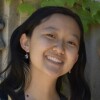After Chevron, Interest Grows in Science Education for Judges

The Supreme Court building.
Carol Highsmith
Since the Supreme Court overturned the Chevron deference doctrine in June, centers of judicial education have been considering what additional scientific support judicial employees might need when handling technical cases.
The ruling in Loper Bright Enterprises v. Raimondo means courts no longer have to accept federal agencies’ interpretation of laws passed by Congress. Judges now will need to grapple with scientific evidence more directly in some cases, said Theresa Harris, director of the Center for Scientific Responsibility and Justice
Such cases will also come up more frequently as regulated entities bring challenges to agency rules in hopes of overruling current interpretations, she added.
The AAAS center has offered courses for judges on neuroscience, the science behind the opioid epidemic, and climate science, the latter in partnership with the Environmental Law Institute. With the Chevron ruling spurring more interest in judicial education, the center is planning a new program. The center wants to give scientists a clear path for getting involved in judicial education, training them to teach judges effectively and bringing more scientists and judges together in conversation.
“Creating a larger group of people who can navigate and straddle both science and law is really what we’re aiming for here,” Harris said.
Currently, the primary source of educational materials for U.S. federal courts is the Federal Judicial Center, which researches topics on request and creates training materials similar to how the Congressional Research Service supports Congress. The center’s main scientific resource is the Reference Manual on Scientific Evidence,
Julie Linkins, director of the center’s Education Division, said it is still too soon to tell whether more scientific expertise is needed in the judiciary because of the Loper Bright ruling.
“Over time, we’ll see whether the judiciary needs to enhance its scientific expertise or whether the mechanisms already in place are sufficient to address the need,” Linkins wrote in an email. “It’s something we’ll be paying attention to as cases play out in the courts.”
The need for scientific understanding in the courts
Loper Bright is not the only reason why judges increasingly need deeper scientific understanding, Harris said.
“There are also emerging areas of science that are simply moving more quickly than legislation. And when that happens, the courts have the front line,” she said. “We’re seeing that happen with artificial intelligence. We’re seeing that happen with some of the medical devices or anything that doesn’t have a regulation ... They’re going to be litigated first.”
Judges themselves are usually not science experts, nor do they have experts on their staff. In fact, some may even see judges as biased if they are “too specialized” and have a scientific background in the subject they are ruling on, said Shubha Ghosh, a law professor at Syracuse University who previously worked at the Federal Judicial Center as an AAAS Science and Technology Policy Fellow.
“It’s great to have that knowledge, but to what extent will they use their own knowledge to supersede the evidence in the case?” Ghosh said. “Because judges are supposed to just look at the evidence of the cases presented by the parties and then make some sort of determination.”
However, judges still need to assess whether each side’s witnesses are indeed expert and whether the science they present is relevant to the case.
“You can think of the plaintiff or the defendants as [people who] tried to submit peer-reviewed publications to a journal for publication,” said Reshmina William, another former AAAS S&T Policy Fellow for the Federal Judicial Center. That makes the judge “analogous to a journal editor,” she added.
In the wake of the Loper Bright decision, William would like to see more discourse between judicial professional associations and scientific associations. And longer-term, she thinks judicial employees would benefit from stronger math and science requirements in their legal education.
“When you start putting scientists and pre-law students in two different tracks and say, ‘Okay, pre-law students, you no longer have to take a math class ever again,’ you’re setting yourself up for failure,” she said. “I think that this is a question of comprehensive curriculum reform.”


